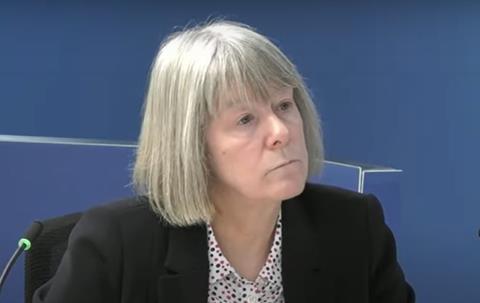Tests carried out in 2002 flagged concerns about material, Grenfell Inquiry told
The government may have understood as long ago as 2002 that Grenfell-style aluminium composite material (ACM) should not be used on high-rise buildings, a former director from the ��ɫ����TV Research Establishment has said.
Debbie Smith, a former director at BRE, was quizzed by the Grenfell Inquiry yesterday about the government’s understanding of a failed safety test of polyethylene-cored ACM cladding carried out in 2001.
The results of the test, carried out by BRE on behalf of the government, were delivered to officials in 2002.

Richard Millett QC, lead counsel to the inquiry, asked Smith whether the government understood “that ACM panels with a polyethylene core should never ever be used above 18 metres”?
Smith answered “yes” – providing the government believed the testing results were representative of a wider problem with the use of the material.
But she added: “The bit that I can’t accept is that the government had taken the view that they should not be used.
“I mean, I don’t know that. All I can say, and as far as I can go, is that the results were reported within the context of the outputs from this project.”
The tests were commissioned following two fires which spread rapidly up the outside of high-rise buildings in 1991 in Knowsley Heights, Merseyside, and in 1999 in Garnock Court, Irvine.
See also>> BRE experts failed to clarify confusing building regs, Grenfell Inquiry hears
The ACM panel used by the BRE in the test was rated ‘Class 0’ - meaning it was considered suitable for high rise buildings under official guidance.
BRE’s report to government said the “aluminium sheeting material” satisfied Class 0 but “proved to be one of the worst performing products” in the large-scale test. It added that “these issues require further consideration”.
The inquiry continues.



























No comments yet